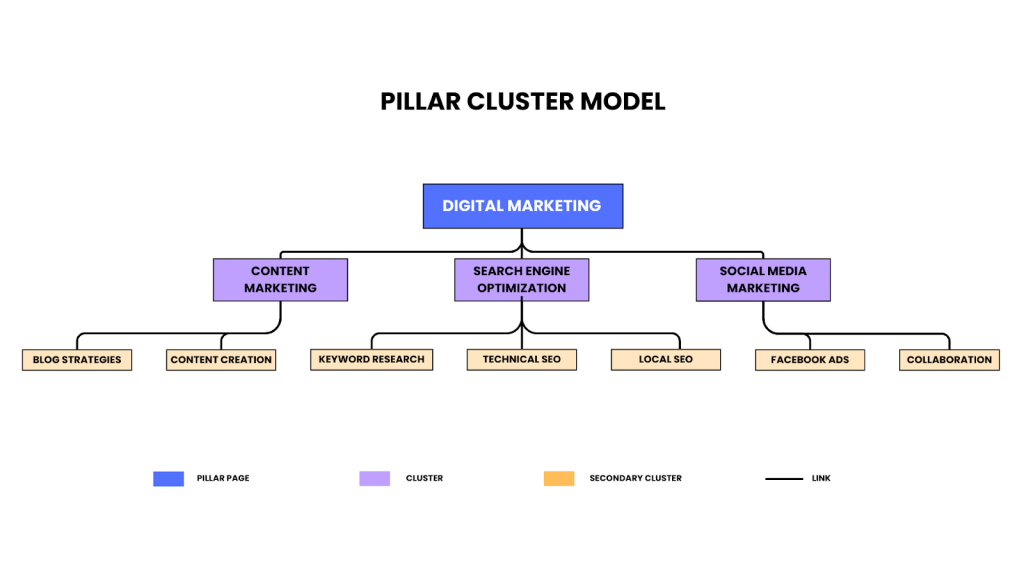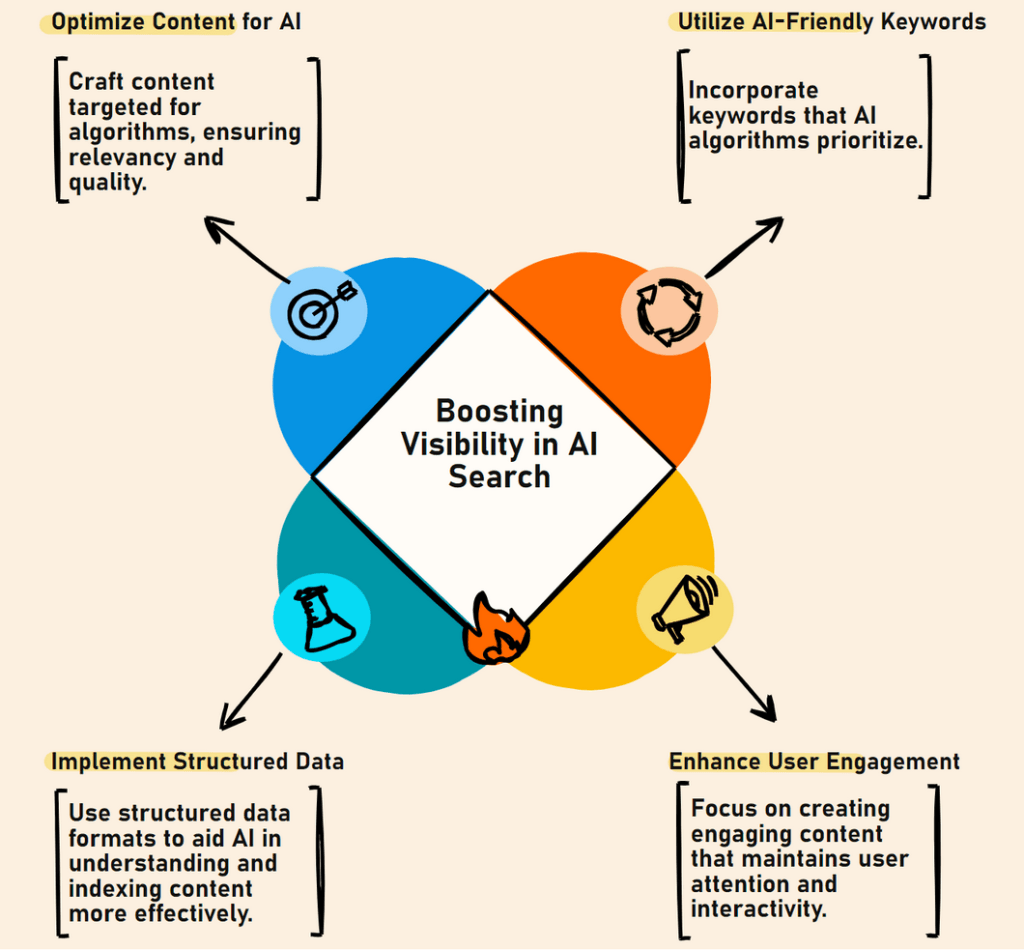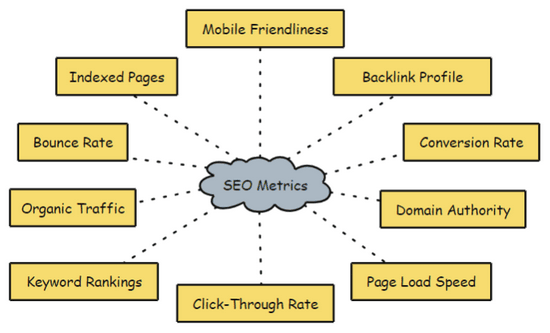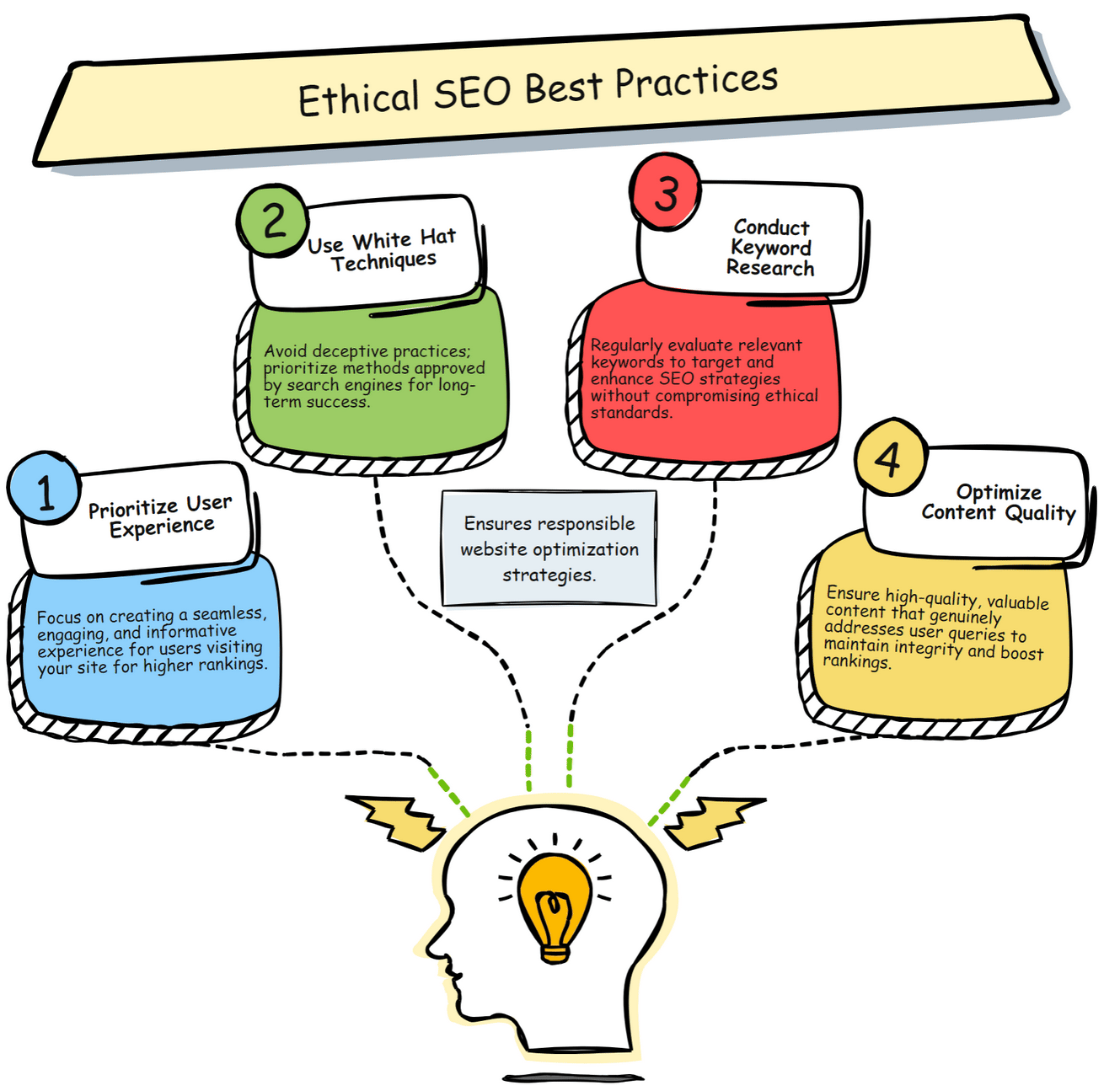Search engine visibility plays a pivotal role in determining online success. With 68% of all online experiences beginning with a search engine, achieving a prominent placement in search results is no longer optional, it is a necessity.
Websites that rank on the top 5 positions of search results capture over 90% of all clicks, creating a significant advantage for businesses in terms of organic traffic, brand credibility, and lead generation. High search engine rankings can directly translate into increased revenue and sustained growth.
This guide is designed to provide a comprehensive understanding of advanced SEO strategies and emerging trends that will elevate your search engine visibility. From mastering the nuances of algorithm changes to optimizing for voice search, artificial intelligence, and mobile-first indexing, we’ll explore actionable techniques to position your website ahead of your competitors.
What is Search Engine Visibility?
Search engine visibility refers to how prominently your website appears in search engine results page for relevant keywords. It determines whether users can easily discover your content when searching for specific terms related to your industry or offerings. Higher visibility means greater exposure, leading to more organic traffic, brand recognition, and potential conversions.
In digital marketing, achieving high search engine visibility is essential because it directly influences how your target audience interacts with your business. The goal is to ensure that your website ranks well on search engines like Google, Bing particularly on the first page of results, as studies show that 75% of users never scroll past the first page.
Search Engine Visibility Calculator
Enter your keywords, monthly search volume, and current ranking position. Then click Calculate Visibility to see your estimated organic traffic.
| Keyword | Monthly Search Volume | Current Ranking Position | Action |
|---|---|---|---|
How to Boost Search Engine Visibility by 2X
- Target Long-Tail Keywords: Focus on specific, less competitive keywords to improve your chances of ranking higher.
- Ensure Mobile-Friendliness: Optimize your website for mobile devices, as search engines prioritize mobile-friendly sites.
- Optimize Title and Meta Descriptions: Craft compelling title tags and meta descriptions to enhance click-through rates.
- Build Relevant Backlinks: Acquire backlinks from reputable sites within your niche to boost your site’s authority.
- Improve Website Loading Speed: A faster website enhances user experience and is favored by search engines.
Advanced Strategies to Increase Search Engine Visibility
Increasing organic search visibility is crucial for driving organic traffic and achieving business growth. By implementing below key techniques, you can significantly make your website more visible on search engines.
Topic Clusters and Pillar Content
Organizing content into topic clusters involves creating a central ‘pillar’ page that provides comprehensive coverage of a broad subject, supported by interlinked subtopic pages. This structure signals to search engines that your website offers in-depth information, enhancing its authority and improving SEO performance.
Implementation Steps:
- Identify Core Topics: Determine broad subjects relevant to your audience and business.
- Create Pillar Pages: Develop comprehensive content that covers each core topic extensively.
- Develop Cluster Content: Produce detailed articles focusing on specific aspects of the core topic.
- Interlink Content: Link cluster pages to their respective pillar page and vice versa to establish a cohesive content network.

Schema Markup Implementation
Schema markup, or structured data, helps search engines interpret your content’s context, leading to enhanced search result displays like rich snippets. These enriched listings can improve click-through rates by providing users with immediate, relevant information.
How to Apply?
- Understand Schema Types: Familiarize yourself with various schema types relevant to your content, such as articles, products, or events.
- Implement Structured Data: Use schema markup to annotate your content, providing clear context to search engines.
- Validate Markup: Utilize tools like Google’s Rich Results Test to ensure correct implementation.
- Monitor Performance: Check search appearance reports to assess the impact on visibility and click-through rates.
Voice Search Optimization
The increasing use of voice-activated assistants has made voice search a significant factor in SEO. Optimizing for voice search involves focusing on natural language queries and providing concise, accurate answers to common questions.
Optimization Techniques:
- Use Conversational Keywords: Incorporate long-tail keywords that reflect natural speech patterns.
- Answer Common Questions: Create content that directly addresses frequently asked questions in your industry.
- Implement Structured Data: Apply schema markup to help search engines identify concise answers suitable for voice queries.
- Enhance Local SEO: Optimize for local searches by maintaining accurate business listings and including location-specific keywords.
Video SEO Strategies
Video content engages users effectively and can improve search rankings. Optimizing videos enhances their discoverability, contributing to increased traffic and user engagement.
Optimization Tips:
- Craft Descriptive Titles: Use clear, keyword-rich titles that accurately reflect the video’s content.
- Write Detailed Descriptions: Provide comprehensive descriptions with relevant keywords to improve search visibility.
- Include Transcriptions: Offer text transcripts of your videos to make content accessible and indexable by search engines.
- Utilize Video Schema Markup: Implement structured data to provide search engines with detailed information about your videos.
Visibility in Google’s Generative AI Search
Google’s integration of generative AI into its search results is reshaping how information is presented and consumed. Understanding this evolution is crucial for increasing your search engine visibility on Google.
Overview of Google’s Generative AI in Search
Google’s Search Generative Experience (SGE) introduces AI-generated summaries, known as AI Overviews, that provide concise answers directly within search results. These overviews appear above traditional organic listings, offering users immediate information without requiring them to click through to external sites.
The prominence of AI Overviews can lead to a decrease in organic click-through rates (CTR) for websites, as users may find the information they need within the AI-generated summary. This shift necessitates a reevaluation of key SEO principles to ensure your content remains visible and engaging.
Strategies to Enhance Visibility in AI-Driven Search
- Concise and Informative Content: Craft content that succinctly answers common user queries, increasing the likelihood of being featured in AI Overviews. Focus on clarity and relevance to align with AI summarization algorithms.
- Schema Markup: Implement structured data to provide search engines with explicit information about your content’s context and structure. This aids AI in accurately interpreting and featuring your content in summaries.
- Build Credible Content: Develop content that showcases your expertise and authority in your field. AI systems prioritize information from reputable sources, so establishing trustworthiness is essential for visibility.

Challenges and Considerations
- Adaptation Strategies: With AI providing direct answers, websites may experience a decline in organic CTR. To counter this, focus on creating in-depth content that encourages users to seek more detailed information beyond the AI summary.
- Advocate for Proper Credit: Ensure that AI-generated summaries attribute your content appropriately, including links back to your site. This maintains brand visibility and drives referral traffic, even when users obtain quick answers from AI overviews.
Using Emerging Technologies for Improved Visibility
In the rapidly evolving digital landscape, leveraging emerging technologies is essential for enhancing search engine visibility. Artificial intelligence (AI) and machine learning (ML) are at the forefront of this transformation, reshaping SEO strategies and search experiences.
Artificial Intelligence and Machine Learning
AI and ML have revolutionized organic search visibility by enabling search engines to better understand user intent and deliver more relevant results. Algorithms like Google’s RankBrain utilize machine learning to process and interpret complex search queries, influencing search rankings based on user behavior and engagement metrics.
Practical Applications:
- Keyword Analysis: AI-powered tools can analyze vast datasets to identify high-performing keywords, uncovering patterns, trends, and intent for more effective SEO campaign management.
- Content Optimization: Machine learning algorithms assess content relevance and structure, providing insights to enhance readability, engagement, and alignment with user intent. This includes optimizing meta tags, headings, and overall content quality to meet evolving search engine algorithms.
Multimodal Search Capabilities
Multimodal search integrates various forms of input – such as text, images, and voice – allowing users to conduct searches using multiple modalities simultaneously. This approach reflects natural human communication patterns and enhances the organic search visibility by accommodating diverse user preferences.
Optimization Approaches:
- Adaptable Content: Ensure your content is versatile and accessible across different formats. This includes optimizing images with descriptive alt text, providing transcripts for videos, and structuring content to be easily interpreted by voice search technologies.
- Enhanced User Experience: Implementing multimodal search capabilities can significantly improve user engagement by offering more intuitive and efficient search options. For instance, allowing users to search using images or voice commands can streamline the search process and yield more accurate results.
Measuring and Analyzing Search Engine Visibility
Effectively measuring and analyzing search engine visibility is crucial for assessing the success of your SEO efforts and identifying areas for improvement. This process involves utilizing essential tools and monitoring key performance indicators (KPIs) to gain comprehensive insights into your website’s performance.
Essential Tools
- Google Search Console: This free tool from Google allows you to monitor your website’s search performance, identify indexing issues, and understand how your site appears in search results. It provides data on search queries, click-through rates (CTR), and site errors, enabling you to optimize your site’s visibility.
- Third-Party SEO Tools: Platforms like Semrush and Ahrefs offer in-depth analysis of your website’s SEO health. They provide features such as keyword tracking, backlink analysis, site audits, and competitive research, which are essential for developing effective SEO strategies.
Key Performance Indicators (KPIs)

- Organic Traffic: This metric measures the number of visitors arriving at your website through unpaid search results. An increase in organic traffic indicates improved search engine visibility and effective SEO practices.
- Keyword Rankings: Monitoring the positions of your targeted keywords in search engine results pages (SERPs) helps assess the effectiveness of your SEO efforts. Improved rankings for relevant keywords can lead to increased organic traffic and visibility.
- User Engagement Metrics: Analyzing metrics such as bounce rate, dwell time, and pages per session provides insights into how users interact with your website. High engagement levels often correlate with valuable content and a positive user experience, which can contribute to better search engine rankings.
Regularly monitoring these tools and KPIs enables you to make data-driven decisions, refine your SEO strategies, and enhance your website’s search engine visibility. By focusing on these metrics, you can identify successful tactics and areas needing improvement, ultimately driving sustained growth in your online presence.
Ethical SEO Practices for Sustainable Visibility
Ethical SEO practices are essential for achieving sustainable search engine visibility. By adhering to search engine guidelines and focusing on user-centric strategies, businesses can build trust, avoid penalties, and foster long-term success.

Importance of Ethical SEO
- Building Trust: Implementing ethical SEO practices enhances credibility with both users and search engines. By prioritizing quality content and user experience, businesses can establish a positive reputation, leading to increased trust and loyalty.
- Avoiding Penalties: Engaging in black-hat SEO techniques, such as keyword stuffing or cloaking, can result in penalties from search engines. These penalties may lead to decreased rankings or removal from search results, negatively impacting online visibility.
Implementing Ethical Strategies
- Quality Content Creation: Focusing on user-centric, valuable content is a cornerstone of ethical SEO. By providing informative and engaging material, businesses can meet user needs and improve search rankings.
- Transparent Link Building: Earning backlinks through genuine relationships and high-quality content fosters trust and authority. This approach aligns with ethical SEO principles and contributes to sustainable visibility.
- Respecting User Privacy: Complying with data protection regulations and best practices ensures user privacy is maintained. This commitment to ethical standards enhances credibility and trustworthiness.
Future Trends in Search Engine Visibility
AI-powered search experiences and ethical SEO practices at the forefront of this transformation. Understanding these trends is essential for businesses aiming to maintain and enhance their online visibility.
- E-A-T (Expertise, Authoritativeness, Trustworthiness): Continued focus on content that demonstrates credibility and authority.
- Local SEO Advancements: Importance of hyper-local targeting and optimization for “near me” searches.
- Zero-Click Searches: Growth of featured snippets and rich results that provide answers directly on the search page.
- Search Intent Optimization: Aligning content with user intent to better match informational, navigational, or transactional queries.
- Core Web Vitals: Increasing emphasis on site performance metrics like loading speed, interactivity, and visual stability.
- Privacy and Data Compliance: Adapting to stricter privacy regulations and user demand for secure browsing experiences.
- Multimodal Search: Integration of text, images, and videos into a single query for diverse search experiences.
- Long-Form Content and Depth: Favoring detailed, well-researched content that satisfies comprehensive user queries.
- Interactive Experiences: Use of interactive tools like calculators, quizzes, and infographics to boost engagement.
- Sustainability in SEO: Rise of green hosting and eco-friendly practices impacting SEO rankings.
Conclusion
In summary, enhancing your website’s search engine visibility requires a strategic approach that incorporates advanced techniques and emerging trends. By focusing on AI-powered search experiences, ethical SEO practices, and user-centric content, you can build trust with both users and search engines. Implementing strategies such as quality content creation, transparent link building, and respecting user privacy will contribute to sustainable visibility.
To stay ahead in the evolving digital landscape, it’s essential to continuously adapt and refine your SEO strategies. By embracing these advanced techniques and trends, you can enhance your website’s performance and achieve long-term success.